
The 5th Stop
Xinglong Observatory of the National Astronomical Observatories, Chinese Academy of Sciences (NAOC)
For thousands of years, the mysterious universe has been attracting people to explore all the time. From the fairy story of Chang'e Flying to the Moon to the First Bold Attempt of Manned Space Flight by Wan Hu, and then to now, satellite and manned spacecraft have become new common tools for observing the earth from space. Human beings are moving farther and farther on the way of pursuing space dream.
On April 26th, 2017, participants of the Centre went to Xinglong Observatory of the National Astronomical Observatories, Chinese Academy of Sciences (NAOC) for a visit with excitement and curiosity.Xinglong Observatory is located at the south of the main peak of the Yanshan Mountains, about 900m in height. It is said that one of the reasons for choosing it as the base of observatory was that this place was in the pitch-blackness. Along the mountain path, the road is surrounded by mountains and green trees.
Xinglong Observatory is located at the south of the main peak of the Yanshan Mountains, about 900m in height. It is said that one of the reasons for choosing it as the base of observatory was that this place was in the pitch-blackness. Along the mountain path, the road is surrounded by mountains and green trees.
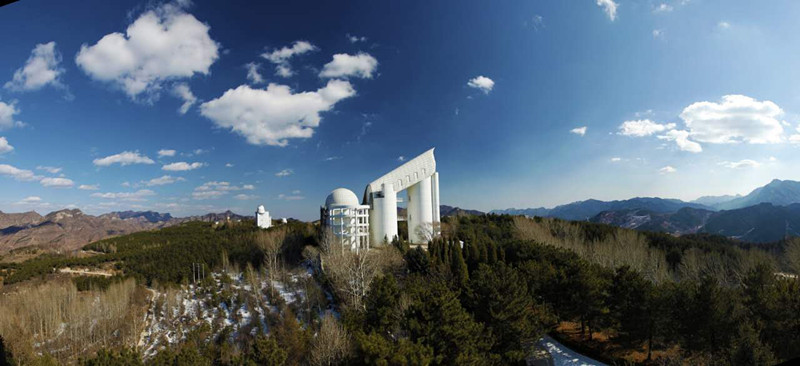
(By Mr. Chen Yingwei)
Under the guidance of Mr. Chen Yingwei and Mr. Zhao You, senior engineers of National Astronomical Observatories, the participants visited the Xinglong Observatory. Mr. Chen Yingwei gave a detailed introduction about Xinglong Observatory and Public Observatory, LAMOST, the 2.16-m Telescope and other scientific research equipment. With professional interpretation, the participants had a deeper understanding of the working principle, working process and data analysis of different kinds of telescopes.
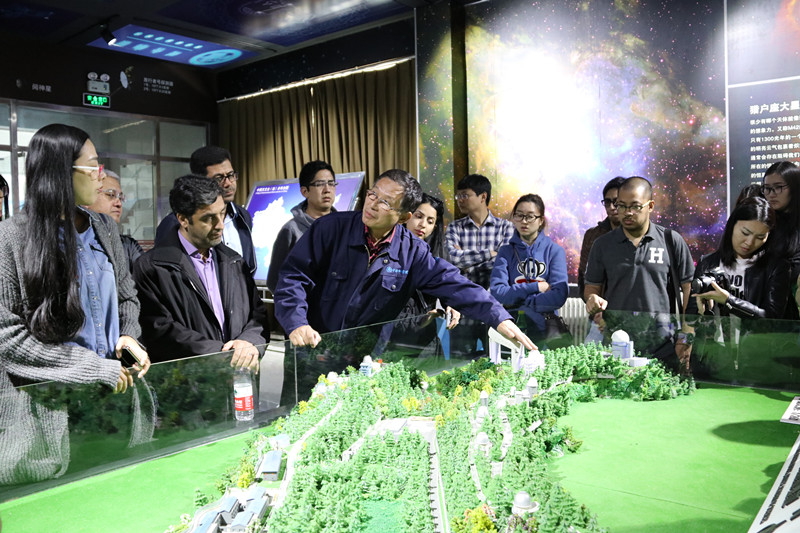
Then, they observe the sun, sunspots, solar prominence and other astronomical phenomena through the telescopes.
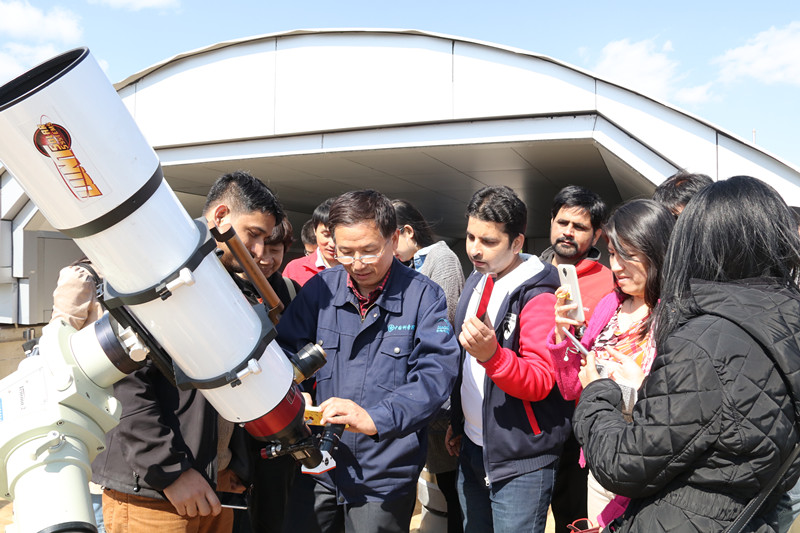
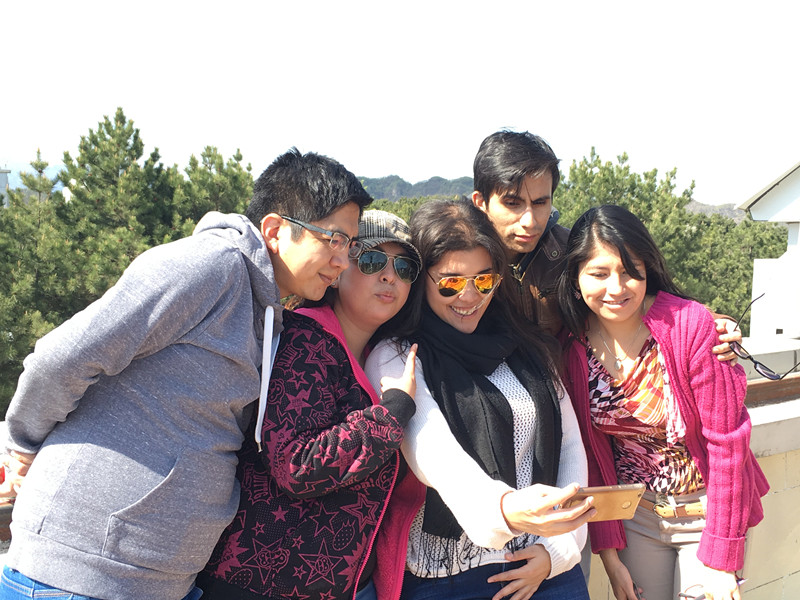
What amazed the students was a large, high-tech, mysterious device, the Large Sky Area Multi-Object Fiber Spectroscopic Telescope (LAMOST). To commemorate Mr. Guo Shou-jing, an astronomer of Yuan dynasty, LAMOST was also named "Guo Shoujing Telescope". The overall concept and key technical innovations make it a unique astronomical instrument in combining a large aperture with a wide field of view. The available large focal surface accommodates up to 4000 fibers, by which the collected light of distant and faint celestial objects down to 20.5 magnitudes is fed into the spectrographs, promising a very high spectrum acquiring rate of several ten-thousands of spectra per night. Under the guidance of Mr. Chen, the participants walked into the "heart" of LAMOST to get a better intuitive understanding of its internal structure and working principle, they all exclaimed, "It is really the first time for us to see such a large telescope!"
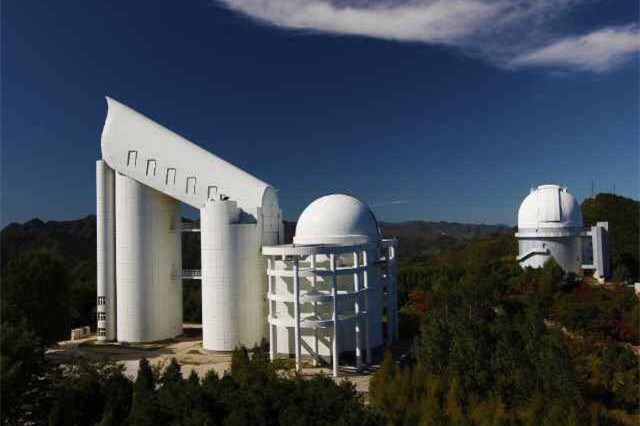
(By Mr. Chen Yingwei)
In addition, the participants also visited 2.16-m Telescope in the Xinglong Observatory. It is a telescope with a 2.16-m effective aperture. It has Cassegrain focus and Coude focus, which is simple to change to each other which only needs one minute and is a creation in the world. The 2.16-m Telescope equipped with BFOSC (Beijing-Faint Object Spectrograph and Camera), OMR Low Resolution Spectrograph and HRS (High Resolution Fiber-Fed Spectrograph), which is able to do various kinds of research and is a universal telescope with complete functions.
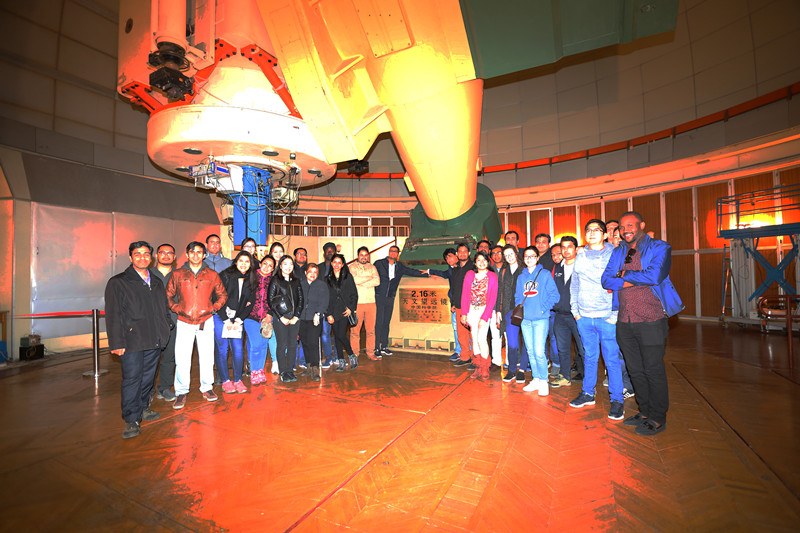
The Stargazing tour in the evening made studens more excited. At 20:30, the students gathered at the base on time and came to the Public Observatory to admire the star. In comparison with only several stars in the sky in cities, the stars here were innumerable and bright. The participants enjoyed the wonderful sky a lot. At that night, the shining stars lit not only the sky but also the dream in their hearts.
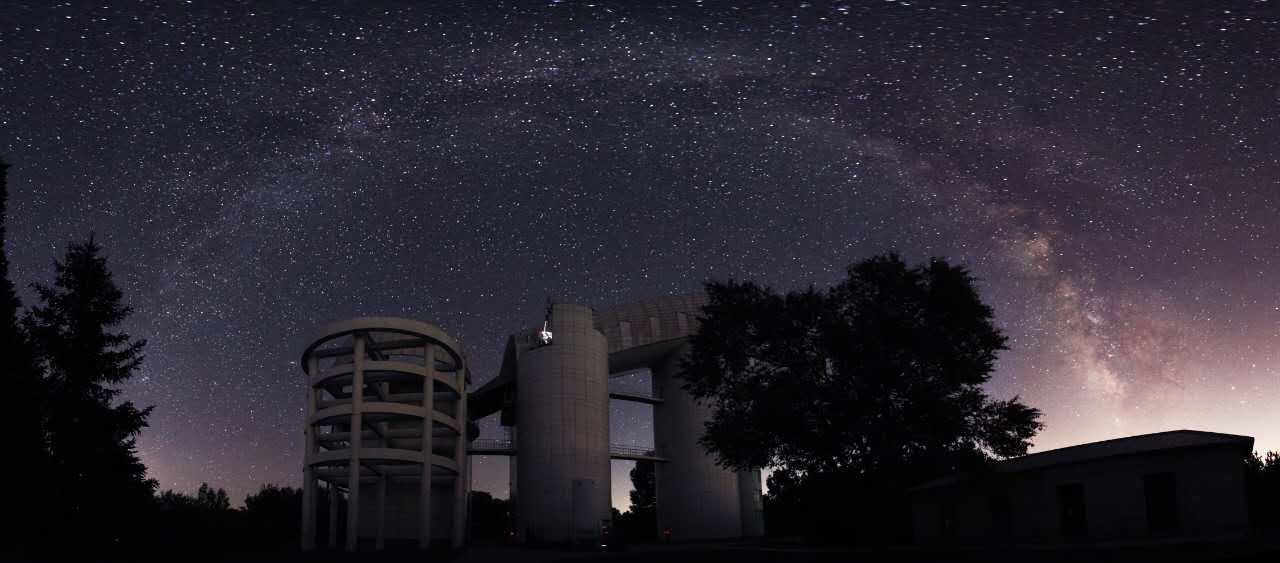
(By Mr. Chen Yingwei)
The next day, Forum on Space Technology Applications was held in the conference room of the Observatory. 12 speakers from different countries gave excellent reports about space technology applications in their home countries including the development histories, current situations, the demand, etc.
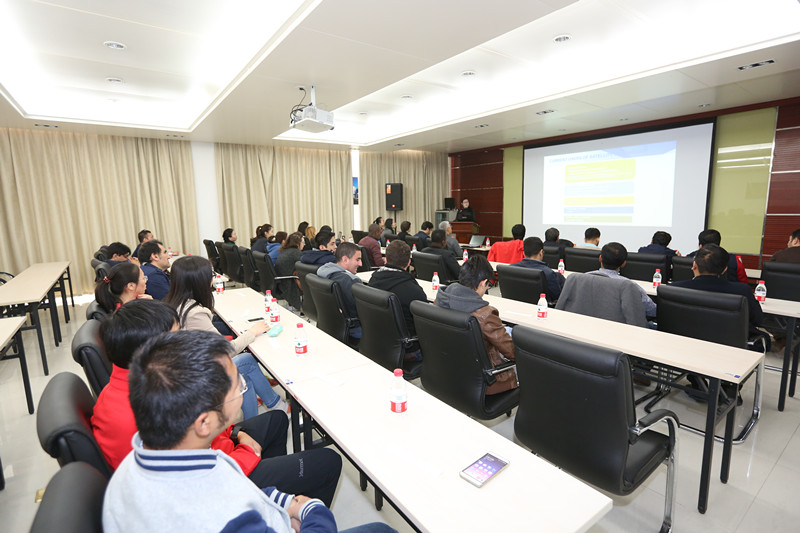
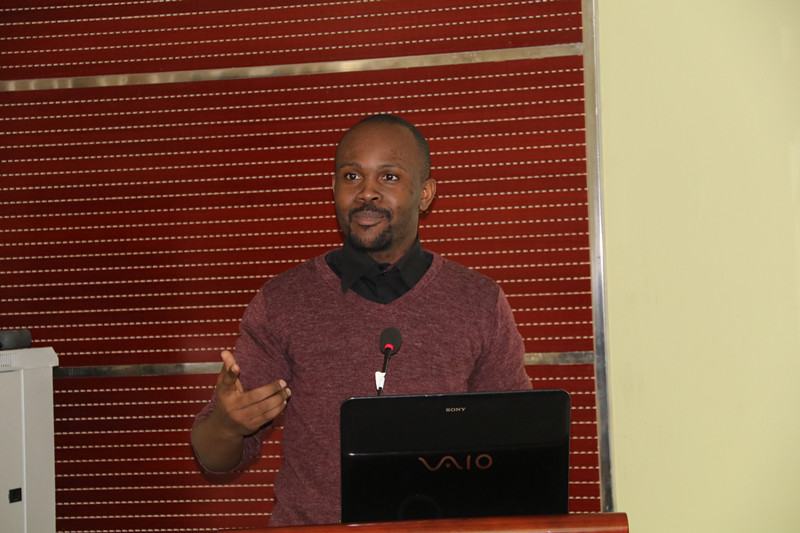
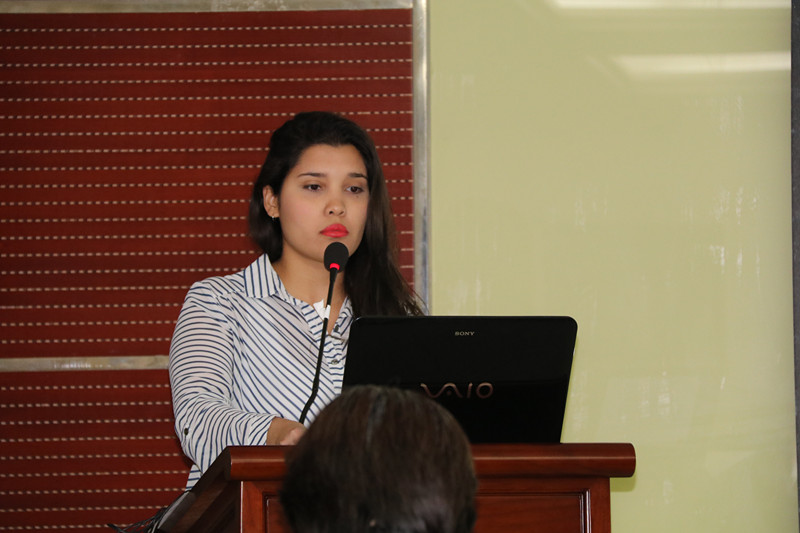
At last, Outstanding Presentation and Outstanding Time Control were selected (Renaldo from Peru won Outstanding PPT Award; AUDREY RODRIGUES DE SIQUEIRA from Brazil and NISAR SAQIB from Pakistan won Outstanding Presentation Award; FATH OLLAHI LOGHMAN from Iran won Outstanding Time Control Award).
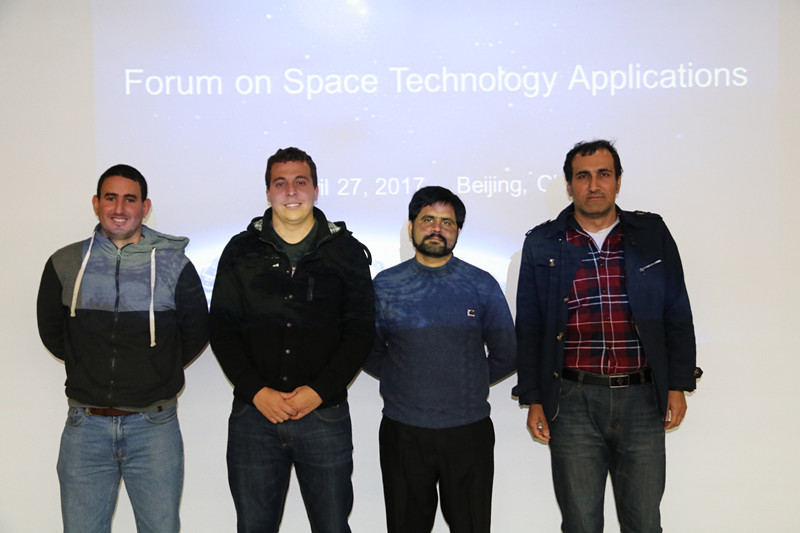
(From left to right: MORALES BARRERA REINALDO, AUDREY RODRIGUES DE SIQUEIRA, NISAR SAQIB, FATH OLLAHI LOGHMAN)
Finally, Dr. Mohammad Ebrahimi Seyedabadi, Director General of Department of Education and Training and Database Management of APSCO gave remarks on the reports and expressed his hope to the participants being core personnel in aerospace industry in the future.
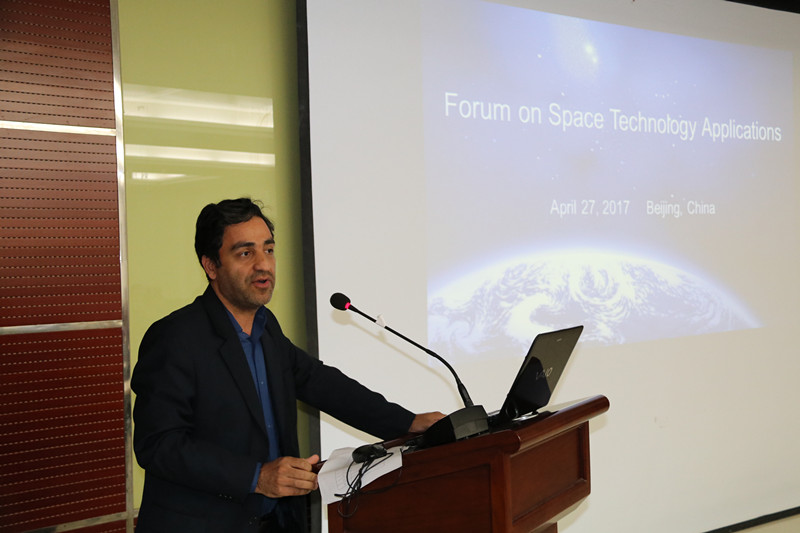
The two-day trip ended, but the beauty and the shock would be unforgettable forever, which would also motivate the students to forge ahead bravely on the way of universe exploration.


